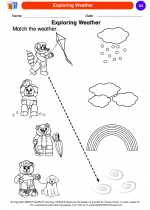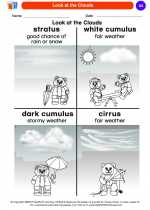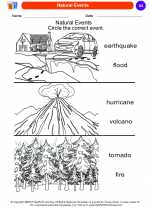Valleys
A valley is a low area of land between hills or mountains, typically with a river or stream flowing through it. Valleys are formed through various geological processes and can take different shapes and sizes.
Formation of Valleys
There are different ways in which valleys can be formed:
- River Erosion: Valleys can be formed by the erosion caused by rivers or streams over a long period of time. The flowing water gradually wears away the land, creating a channel and forming a valley.
- Glacial Activity: Glaciers can carve out U-shaped valleys as they move and erode the land. These valleys often have a characteristic wide and flat bottom with steep sides.
- Tectonic Activity: Valleys can also be formed through tectonic forces such as the movement of tectonic plates, which can cause the land to sink and form a valley.
Types of Valleys
Valleys can be categorized into different types based on their formation and characteristics:
- V-Shaped Valleys: These valleys are typically formed by river erosion and have steep sides that converge to form a V-shape.
- U-Shaped Valleys: These valleys are often formed by glacial activity and have a wide, flat bottom with steep, rounded sides.
- Valley Floors: Some valleys have flat floors, while others may contain floodplains or terraces, depending on the geological processes that shaped them.
Study Guide
Here are some key points to remember when studying valleys:
- Understand the different geological processes that can lead to the formation of valleys, such as river erosion, glacial activity, and tectonic forces.
- Be able to identify and describe the characteristics of V-shaped and U-shaped valleys.
- Learn about the role of water and ice in shaping and carving out valleys over time.
- Explore the importance of valleys as habitats for various plants and animals, as well as their role in providing routes for human settlements and transportation.
By understanding the formation and characteristics of valleys, you can gain a deeper appreciation for the diverse landscapes found on Earth.
[Valleys] Related Worksheets and Study Guides:
.◂Science Worksheets and Study Guides Kindergarten. Weather
Coloring Worksheet Calendar
Calendar  Coloring Worksheet
Coloring Worksheet Calendar
Calendar  Coloring Worksheet
Coloring Worksheet Day and Night
Day and Night  Coloring Worksheet
Coloring Worksheet Day and Night
Day and Night  Coloring Worksheet
Coloring Worksheet Exploring Weather
Exploring Weather  Coloring Worksheet
Coloring Worksheet Exploring Weather
Exploring Weather  Coloring Worksheet
Coloring Worksheet Look at the Clouds
Look at the Clouds  Coloring Worksheet
Coloring Worksheet Look at the Clouds
Look at the Clouds  Coloring Worksheet
Coloring Worksheet Moon & Stars
Moon & Stars  Coloring Worksheet
Coloring Worksheet Moon & Stars
Moon & Stars  Coloring Worksheet
Coloring Worksheet Natural Events
Natural Events  Coloring Worksheet
Coloring Worksheet Natural Events
Natural Events  Coloring Worksheet
Coloring Worksheet Sun and Shadows
Sun and Shadows  Coloring Worksheet
Coloring Worksheet Sun and Shadows
Sun and Shadows  Coloring Worksheet
Coloring Worksheet The Seasons
The Seasons  Coloring Worksheet
Coloring Worksheet The Seasons
The Seasons  Coloring Worksheet
Coloring Worksheet Things in the Sky
Things in the Sky  Coloring Worksheet
Coloring Worksheet Things in the Sky
Things in the Sky  Coloring Worksheet
Coloring Worksheet Weather Tools
Weather Tools  Coloring Worksheet
Coloring Worksheet Weather Tools
Weather Tools 

 Coloring Worksheet
Coloring Worksheet
 Coloring Worksheet
Coloring Worksheet
 Coloring Worksheet
Coloring Worksheet
 Coloring Worksheet
Coloring Worksheet
 Coloring Worksheet
Coloring Worksheet
 Coloring Worksheet
Coloring Worksheet
 Coloring Worksheet
Coloring Worksheet
 Coloring Worksheet
Coloring Worksheet
 Coloring Worksheet
Coloring Worksheet
 Coloring Worksheet
Coloring Worksheet
 Coloring Worksheet
Coloring Worksheet
 Coloring Worksheet
Coloring Worksheet
 Coloring Worksheet
Coloring Worksheet
 Coloring Worksheet
Coloring Worksheet
 Coloring Worksheet
Coloring Worksheet
 Coloring Worksheet
Coloring Worksheet
 Coloring Worksheet
Coloring Worksheet
 Coloring Worksheet
Coloring Worksheet
 Coloring Worksheet
Coloring Worksheet

The resources above cover the following skills:
EARTH AND SPACE SCIENCE (NGSS)
Earth’s Systems
Students who demonstrate understanding can:
Use and share observations of local weather conditions to describe patterns over time.